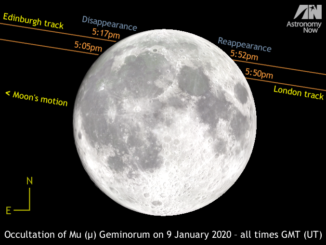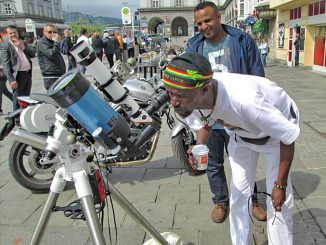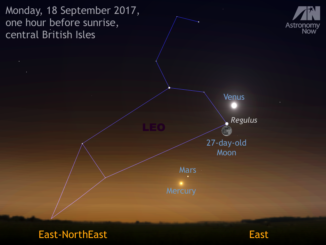The live broadcast from NASA Television of the partial solar eclipse is now over.
Related Articles

Watch the Moon hide naked-eye star Tejat in Gemini on 9 January
Magnitude +2.9 star Mu (μ) Geminorum, better nown as Tejat in the constellation of Gemini, is occulted (hidden) by the rising 13-day-old waxing gibbous Moon early on the evening of Thursday, 9 January 2020 as seen from the entire British Isles. This is a spectacle for small telescopes and large binoculars, the first bright lunar occultation of a busy year for such events.

Where to view the transit of Mercury on 9 May
With the transit of Mercury just two days away, interest in this comparatively rare event is growing fast. Given the favourable timing of this 7½-hour phenomenon for the UK, many will be able to view it at lunchtime or after work. If you don’t have suitably equipped telescope, join one of the many transit-viewing activities hosted by astronomical organisations nationwide.

